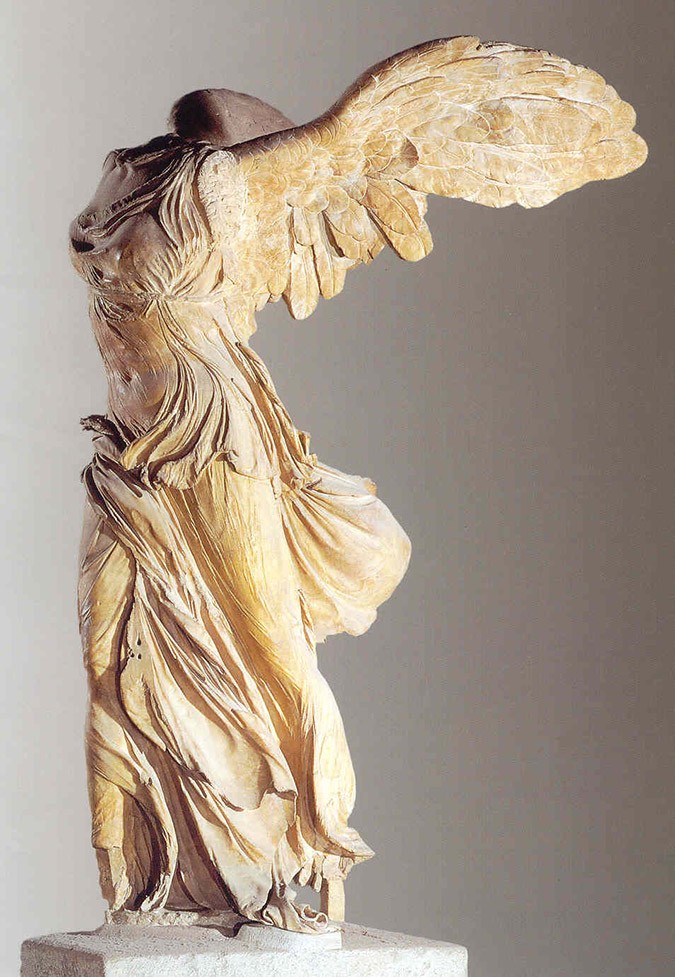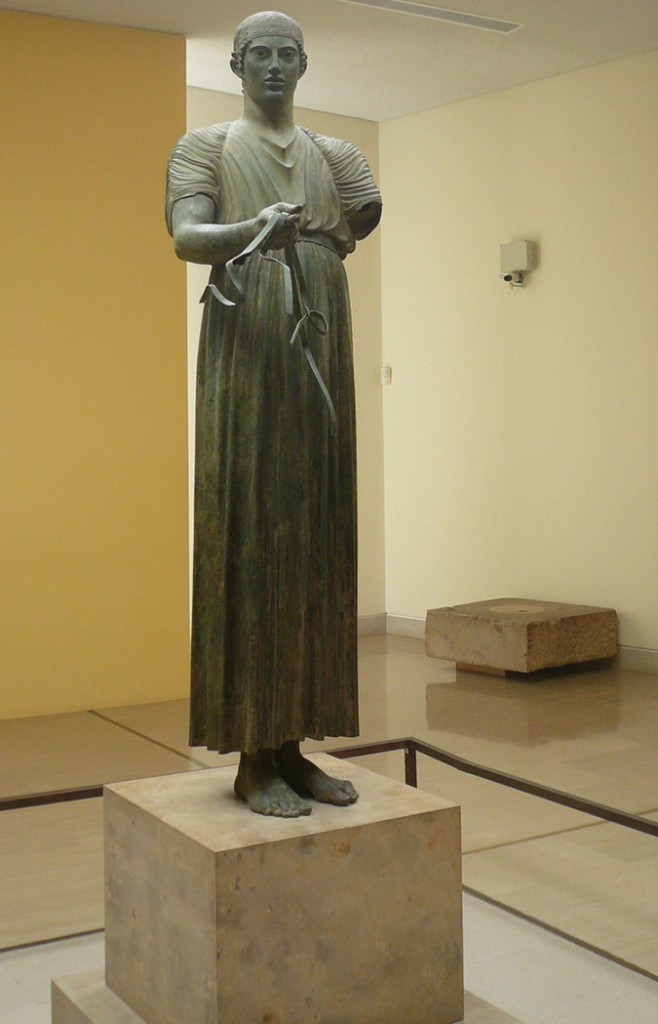The grandeur of the 227-centimeter tall caryatid statues of Amphipolis are just the latest testimonies of the beautiful large-scale masterpieces of Greek antiquity.
Winged Victory of Samothrace
Height – 244 centimeters (328 centimeters with the wings)
Displayed at the Louvre
The 2nd-century B.C. marble sculpture of the Greek goddess has been prominently displayed at the Louvre since 1884 and has been described as one of the greatest masterpieces of Hellenistic sculpture. Discovered in 1863, it is estimated to have been created at around 200-190 B.C.
Aphrodite of Milos
Height – 203 centimeters
Displayed at the Louvre
The famous sculpture was created between 130-100 B.C. and is believed to depict Aphrodite, the Greek goddess of love and beauty. Made of marble, her missing arms hold a mystery. The statue was discovered in 1820 by a peasant named Yorgos Kentrotas on the isle of Milos. It was created by Alexandros of Antioch though initially it was mistakenly attributed to Praxitelis.
Caryatids
Height – 230 centimeters
Displayed at the Acropolis Museum and British Museum
These female figures worked as architectural supports taking the place of a column or pillar. The most famous caryatids were the ones on the Erechtheion, the Caryatid Porch of the Acropolis. One of the original six figures was removed by Lord Elgin in the early 19th century and is held at the British Museum in London. Though they are of the same height and build and similarly attired and coiffed, their faces, stance and draping is different. The three on the left stand on their right food while those on the right stand on their left foot.
Hermes and the Infant Dionysos
Height – 210 centimeters
Displayed at the Archaeological Museum of Olympia
The work, found in 1877 in the ruins of the Temple of Hera at Olympia – is attributed to sculptor Praxiteles. It dates back to the 4th century B.C. and is referred to in a passing mention in a text by ancient Greek traveler Pausanias.
Charioteer of Delphi (Heniokhos)
Height – 180 centimeters
Displayed at Delphi Archaeological Museum
The bronze statue was erected at Delphi in 478 or 474 B.C. to commemorate the victory of the chariot team in the Pythian Games to honor Pythean Apollo. A base inscription indicates that it was dedicated by Polyzalus, the tyrant of Gela from the Greek colony of Sicily as a tribute to Apollo for helping him win.








































